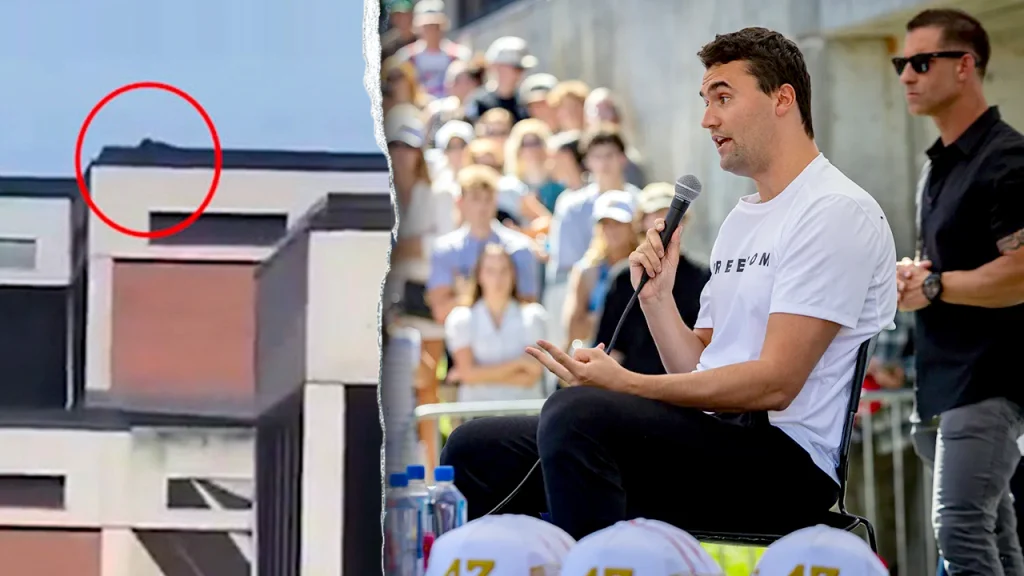Assassination of Charlie Kirk: The Hunt for a Shadowy Killer
On a seemingly ordinary Wednesday afternoon at Utah Valley University, tragedy struck during what should have been a routine speaking engagement. Charlie Kirk, the 31-year-old founder of Turning Point USA and father of two, was engaged in spirited debate with students under a tent when a single gunshot pierced the air. The bullet, fired from approximately 200 yards away, struck Kirk in the neck. Despite being quickly rushed to the hospital by his private security team, Kirk was later pronounced dead. The assassination, which occurred just 20 minutes into Kirk’s “American Comeback Tour” appearance, transformed a peaceful campus discussion into a scene of horror as witnesses screamed and fled for cover. The event has sent shockwaves through political circles and campuses nationwide, leaving communities grappling with both grief and questions about security at public events.
The emergency response unfolded rapidly as dispatchers received multiple calls about the shooting around 12:20 p.m. “Be advised, UVU in Orem has had an active shooter at the Charlie Kirk event,” a dispatcher announced over police radio. “We’re getting several calls. I’m trying to get more information.” Police were already present at the scene, as was Kirk’s private security team who helped rush him to medical care. As the situation developed, law enforcement began piecing together a description of the suspect: “He’s going to be wearing all black, black long gun, black tactical helmet, a black mask, possibly wearing a tactical vest and jeans.” This description painted a picture of a methodical, prepared assailant who had planned the attack with chilling precision, rather than an impulsive act of violence.
By Thursday morning, the hunt for the assassin remained active as investigators worked to uncover the identity and motives of the killer. FBI Salt Lake City Special Agent in Charge Robert Bohls reported significant progress in the investigation, noting that authorities had traced the sniper’s escape route and recovered a “high-powered, bolt-action rifle.” Perhaps most promising for the investigation, law enforcement also obtained foot, palm, and forearm imprints linked to the crime. Video evidence circulating online appears to show a dark-clad figure on a rooftop, which aligns with the authorities’ assessment that the fatal shot came from a perch atop the Losee Center building, situated on the opposite side of the plaza from where Kirk was speaking. The physical evidence and visual documentation have provided investigators with crucial leads as they work to identify the perpetrator.
In the immediate aftermath of the shooting, police initially detained two individuals—George Zinn and Zachariah Qureshi—for questioning. However, both were subsequently released, with Zinn charged only with obstruction. “There are no current ties to the shooting with either of these individuals,” a Utah Department of Public Safety spokeswoman clarified in a statement, emphasizing that “there is an ongoing investigation and manhunt for the shooter.” This development underscores the complexity of the investigation and the challenges law enforcement faces in identifying the true perpetrator. The absence of an immediate suspect has only intensified public concern about the possibility of additional threats and has raised questions about security measures at public events, particularly those involving controversial political figures.
Former DEA special agent David Katz, now CEO of Global Security Group, offered insights into the investigative process, suggesting that “basic police work” would be crucial to solving the case. “They should be pulling every cellphone ping from that small geographic area,” Katz explained, highlighting the importance of digital evidence in modern investigations. He also emphasized the value of reviewing surveillance footage from weeks prior to identify anyone who might have accessed the rooftop in preparation for the attack. “They need to be focused on mechanisms of escape,” Katz continued. “Every single car in the area. I imagine he didn’t get away on public transportation in Utah, so it’s got to be a vehicle. After the shot, it would have taken seconds for him to get down. I don’t know if he discarded the gun, but it would have been a simple matter of changing your shirt and leaving the area quickly.” The methodical approach described by Katz illustrates the painstaking work required to identify the suspect in what appears to be a carefully planned assassination.
As communities across the United States hold vigils to mourn Kirk’s death, the assassination has prompted broader reflections on the state of political discourse in America. The targeted killing of a prominent conservative voice has resonated beyond political lines, touching on fundamental concerns about safety, free speech, and the escalation of political tensions. Kirk, known for his outspoken conservative views and his founding of Turning Point USA, was a polarizing figure in American politics. However, his violent death has been universally condemned, with calls for healing and unity emerging from across the political spectrum. As the investigation continues and the nation processes this shocking act of violence, questions remain about the motivations behind the killing and whether it represents an isolated incident or a troubling indicator of deeper societal divisions. In either case, the assassination of Charlie Kirk stands as a stark reminder of the fragility of civil discourse and the need for vigilance in protecting the fundamental right to express political views without fear of violence.


